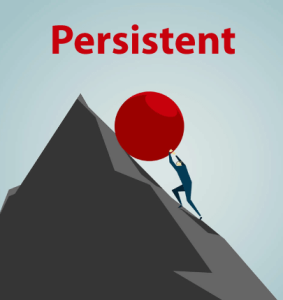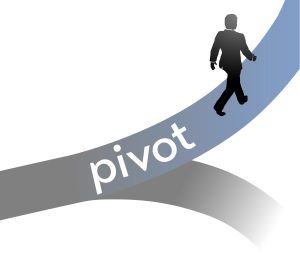
As we approach the start of the year, it’s the perfect time for reflection. Whether you’re a business leader steering your company through uncertain waters or a professional evaluating your career path, one key question arises: Should you persist and stay the course or pivot and explore a new direction?
History provides us with examples of both strategies—instances where persistence paid off and moments when bold pivots led to success. Let’s explore these stories and consider how they might inspire your own decisions.When
Persistence Pays Off

Sometimes, holding firm in the face of adversity leads to incredible outcomes. Two notable examples demonstrate the power of patience and steadfastness:
Ford Motor Company During the Great Depression
In the 1930s, as the Great Depression crippled industries, demand for automobiles plummeted. Ford Motor Company scaled back production but remained committed to its innovative assembly line and workforce. By focusing on efficiency and maintaining its vision, Ford emerged from the downturn stronger, ready to capitalize on the economic recovery.
Starbucks During the 2008 Financial Crisis
The global financial crisis of 2008 hit discretionary spending hard, and Starbucks faced declining sales. Instead of panicking, the company doubled down on its core values—enhancing the customer experience and focusing on quality. This persistence paid off as consumer confidence rebounded, helping Starbucks grow into the global giant we know today.

The Boldness of a Well-Timed Pivot
While persistence can be powerful, knowing when to pivot is equally critical. Several now-iconic companies achieved greatness by embracing transformation:
YouTube: From Dating Site to Video Platform
Launched in 2005 as a dating website where users could upload video profiles, YouTube struggled to gain traction. Realizing the broader potential of user-generated video, its founders pivoted to create the world’s largest video-sharing platform. This bold move led to YouTube’s acquisition by Google and its dominance in online video.
Twitter: From Podcasting to Social Networking
Originally known as Odeo, Twitter started as a podcasting platform. When Apple launched iTunes podcasting, the team pivoted to create a microblogging platform. Today, Twitter is a global hub for real-time news and conversations.
Slack: From Gaming to Team Collaboration
Before it was a workplace communication tool, Slack was a gaming company called Tiny Speck. The team’s internal chat tool proved more valuable than the game itself, leading to a pivot that revolutionized workplace communication.
Which Path Is Right for You?
Reflecting on these stories, the question remains: Should you persist or pivot? Here are some guiding questions to help you decide:
- Is there clear evidence of long-term viability in your current course? If trends and data suggest potential for recovery or growth, persistence might be the answer.
- Are you facing insurmountable obstacles or diminishing returns? If the market has fundamentally shifted or your model is no longer sustainable, a pivot could open new opportunities.
- Do you have the resources to wait? Persistence often requires patience and financial resilience, while a pivot demands flexibility and bold decision-making.
- What aligns with your vision and values? A successful decision is one that stays true to your mission while adapting to reality.
As you start out the year, take time to evaluate your journey. Both persistence and pivoting require courage, insight, and resilience. Look to the examples above for inspiration and make the decision that aligns with your goals and the challenges ahead.
Your choice today could set the stage for your success in the year to come. So, what will it be: staying the course or blazing a new trail? Let’s hear your thoughts in the comments below.
-by Ruben Garcia
#StayTheCourse #LongTermVision
#NewYearNewJob #EmbraceChange

